We Guarantee 100% Security of Your Provided Information
Filled information is only used to contact you for further assistance. We are not going to spam or sell your personal data to anyone.

In today’s digital age, where attention spans are fleeting and competition is fierce, the ability to captivate audiences with compelling narratives has become more crucial than ever. Enter graphic design – the art of visual storytelling that transcends language barriers and resonates with individuals on a profound level. In this comprehensive guide, we delve into the transformative power of graphic design in elevating brand narratives, exploring its impact, techniques, and the unparalleled value it brings to businesses worldwide.
Table of Contents
ToggleGraphic design is more than just creating visually appealing images; it’s about communicating ideas, evoking emotions, and shaping perceptions. Whether through logos, advertisements, or website layouts, graphic design serves as the visual language that speaks volumes about a brand’s identity and values.
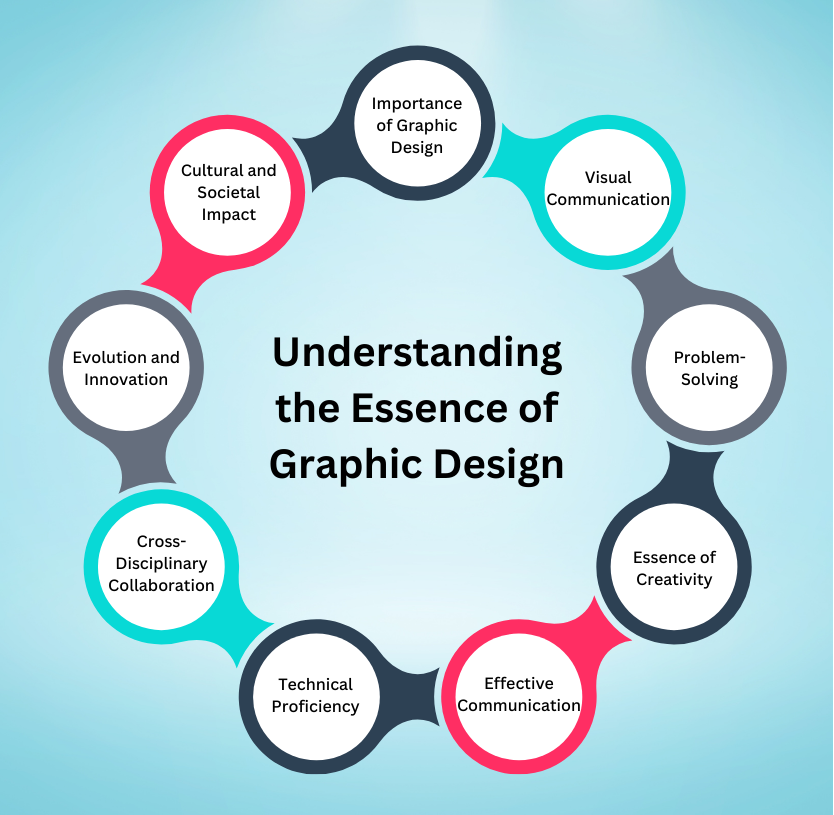
Core Purpose:
Elements of Visual Communication:
Design Thinking:
User-Centered Design:
Branding and Identity:
Creative Expression:
Innovation and Inspiration:
Problem-Solving through Creativity:
Clarity and Simplicity:
Visual Hierarchy:
Emotional Connection:
Mastery of Tools and Techniques:
Understanding of Design Principles:
Adaptability and Continual Learning:
Collaboration with Other Disciplines:
Interdisciplinary Skills:
Integration of Design with Business Objectives:
Technological Advancements:
Trends and Aesthetics:
Sustainable and Ethical Design:
Cultural Representation:
Social Advocacy and Activism:
Global Connectivity:
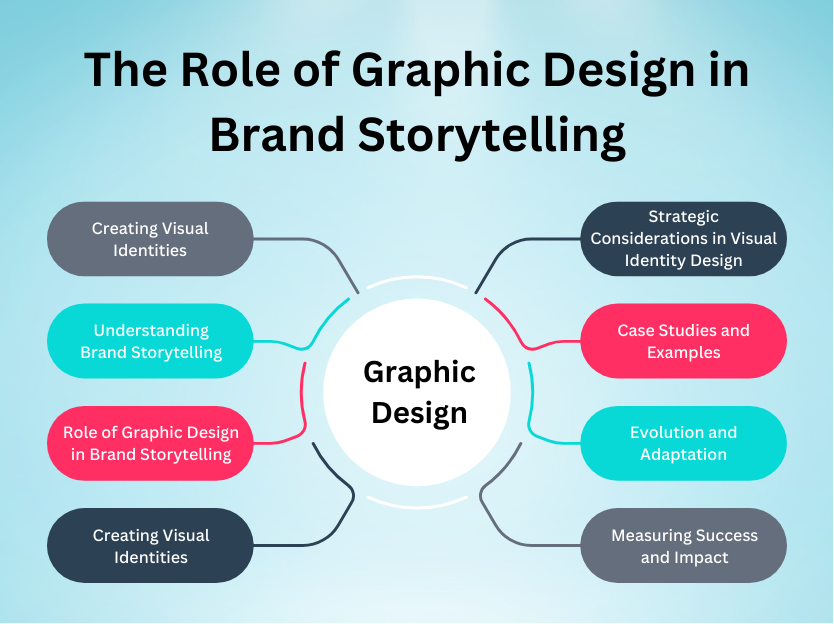
Graphic design plays a pivotal role in shaping a brand’s visual identity, encompassing elements such as logos, color palettes, and typography that convey the brand’s personality and values at a glance.
Importance of Visual Identities in Brand Storytelling
Core Concepts:
Elements of Brand Storytelling:
Brand Values: The core beliefs and principles that define a brand’s identity and guide its actions and decisions.
Brand Personality: The human-like traits and characteristics attributed to a brand, influencing how it is perceived by consumers.
Brand Voice: The tone, language, and style used in brand communications to convey its personality and connect with audiences.
Brand Narrative: The overarching story or narrative that encapsulates the brand’s journey, mission, and purpose, resonating with consumers on a deeper level.
Visual Representation:
Consistency and Coherence:
Emotional Connection:
Brand Identity Development:
Logo Design:
Typography and Typography:
Color Palette:
Imagery and Visual Elements:
Target Audience:
Brand Differentiation:
Flexibility and Adaptability:
Example 1: Nike
Example 2: Coca-Cola
Brand Refresh and Rebranding:
Digital Transformation:
Brand Recognition and Recall:
Consumer Engagement and Loyalty:
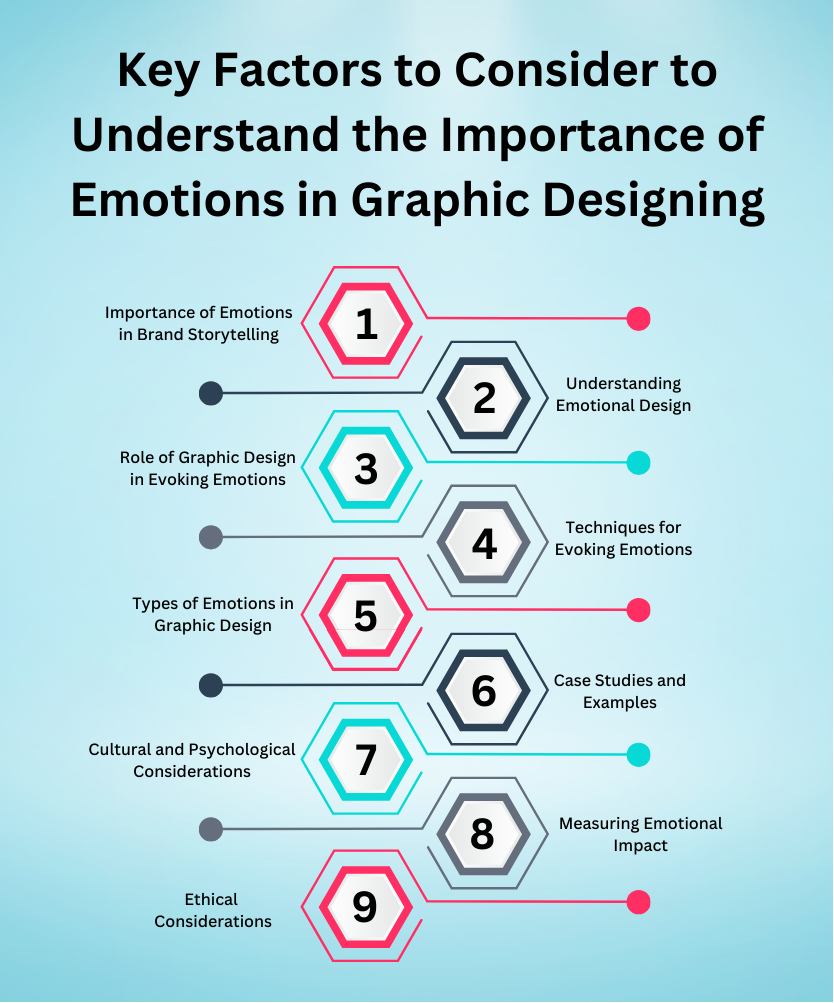
Through carefully crafted imagery, graphic design has the power to evoke emotions and forge meaningful connections with audiences, fostering brand loyalty and affinity.
Emotional Design Principles:
Three Levels of Emotional Design:
Visual Language:
Emotional Resonance:
Storytelling through Design:
Color Psychology:
Imagery and Visual Metaphors:
Typography and Textures:
Composition and Layout:
Composition and layout influence the flow, balance, and hierarchy of visual elements, shaping the emotional response and user experience.
Designers use principles of design, such as proximity, alignment, and contrast, to create visual impact and evoke emotions effectively.
Positive Emotions:
Negative Emotions:
Mixed Emotions:
Example 1: Apple
Example 2: Dove
Cultural Sensitivity:
Psychological Impact:
Qualitative Feedback:
Quantitative Metrics:
Authenticity and Transparency:
Responsibility and Empathy:
Intuitive and visually pleasing design elements enhance the user experience, making it easier for audiences to navigate and engage with a brand’s content across various touchpoints.
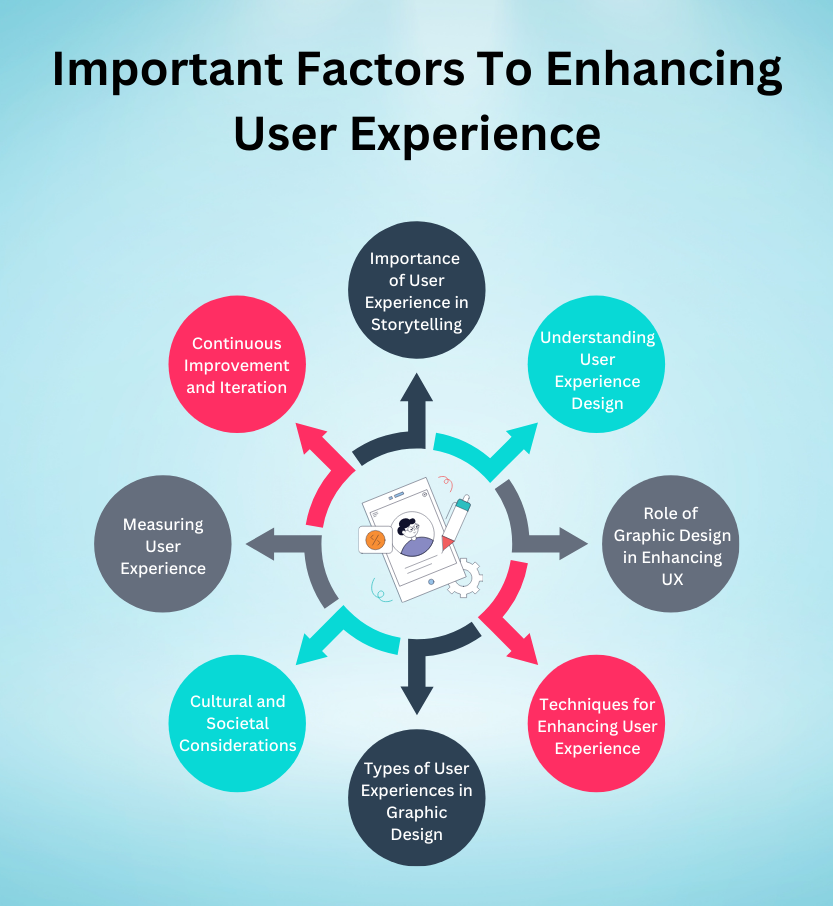
Definition of User Experience (UX):
Core Concepts:
Elements of User Experience Design:
Visual Communication:
Brand Consistency:
Emotional Engagement:
Visual Hierarchy:
Typography and Readability:
Color and Contrast:
Consistent Branding:
Interactive Elements:
Accessibility and Inclusivity:
Positive User Experiences:
Positive user experiences delight and satisfy users, meeting their needs, exceeding their expectations, and leaving a lasting impression.
Designers aim to create intuitive, enjoyable, and memorable experiences that foster brand loyalty and advocacy among users.
Seamless User Journeys:
Emotional Connections:
Example 1: Airbnb
Example 2: Spotify
Cultural Sensitivity:
Ethical Design Practices:
Usability Testing:
User Feedback and Surveys:
Iterative Design Process:
A/B Testing and Experimentation:
In a crowded marketplace, standout graphic design sets brands apart from competitors, leaving a lasting impression and ensuring top-of-mind recall among consumers.
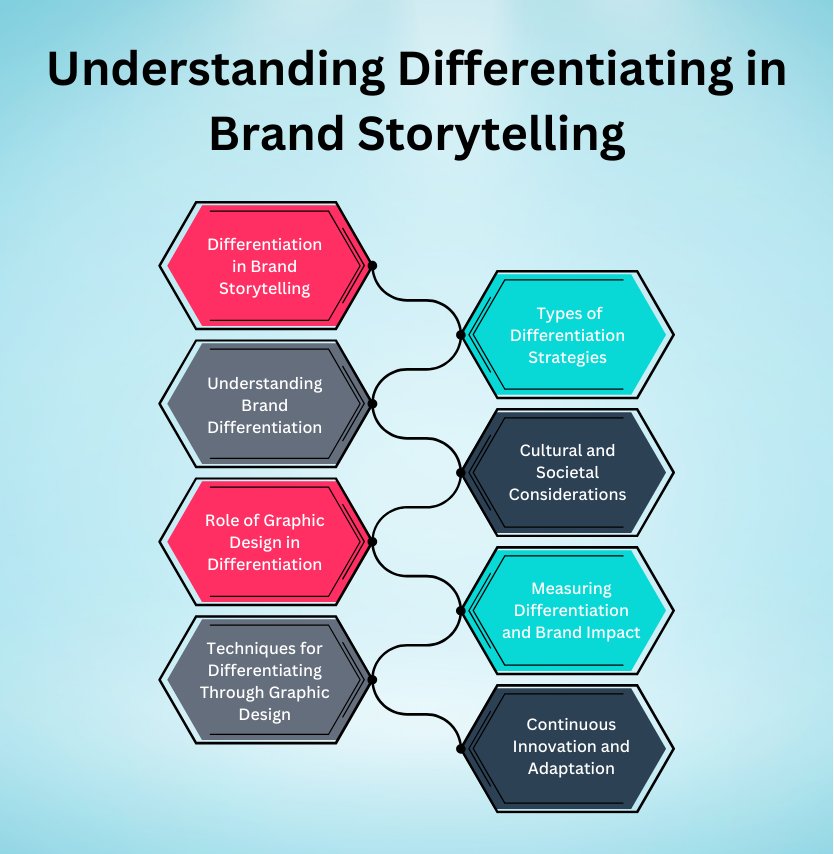
Core Concepts:
Importance of Differentiation:
Visual Identity:
Brand Personality:
Unique Visual Elements:
Signature Brand Assets:
Custom Typography:
Innovative Design Solutions:
Storytelling through Design:
Product Differentiation:
Brand Values and Personality:
Customer Experience:
Example 1: Apple
Example 2: Coca-Cola
Cultural Relevance:
Social Responsibility:
Brand Awareness and Recognition:
Brand Equity and Perceived Value:
Market Monitoring and Competitive Analysis:
Iterative Design Process:

Streamline design elements to convey messages clearly and concisely, avoiding clutter that can detract from the overarching narrative.
Simplicity allows designers to use visual metaphors, symbols, or icons to communicate complex concepts or abstract ideas in a clear and memorable way.
Visual metaphors evoke emotions, associations, and meanings that resonate with audiences on a deeper level, enhancing the storytelling experience.
Maintain consistency in design elements across all brand touchpoints, including websites, social media, and marketing collateral, to reinforce brand recognition and coherence.
Definition of Consistency Across Platforms:
Importance of Consistency:
2. Brand Identity Cohesion
Unified Brand Identity:
Brand Guidelines and Standards:
Seamless User Experience:
Familiarity and Trust:
Coherent Brand Messaging:
Reinforcement of Brand Values:
Contextual Relevance:
Responsive Design:
Integrated Campaigns:
Omni-channel Marketing:
Example 1: Nike
Example 2: Coca-Cola
Cultural Sensitivity:
Localization Strategies:
Brand Equity Metrics:
Cross-platform Analytics:
Iterative Design Process:
Utilize color psychology to evoke specific emotions and associations that align with the brand’s values and messaging.
Guide viewers’ attention through strategic use of visual hierarchy, ensuring that key messages and calls-to-action are prominently featured.
Nike’s iconic swoosh logo and visually compelling advertisements embody the brand’s ethos of empowerment and athleticism, resonating with audiences worldwide.
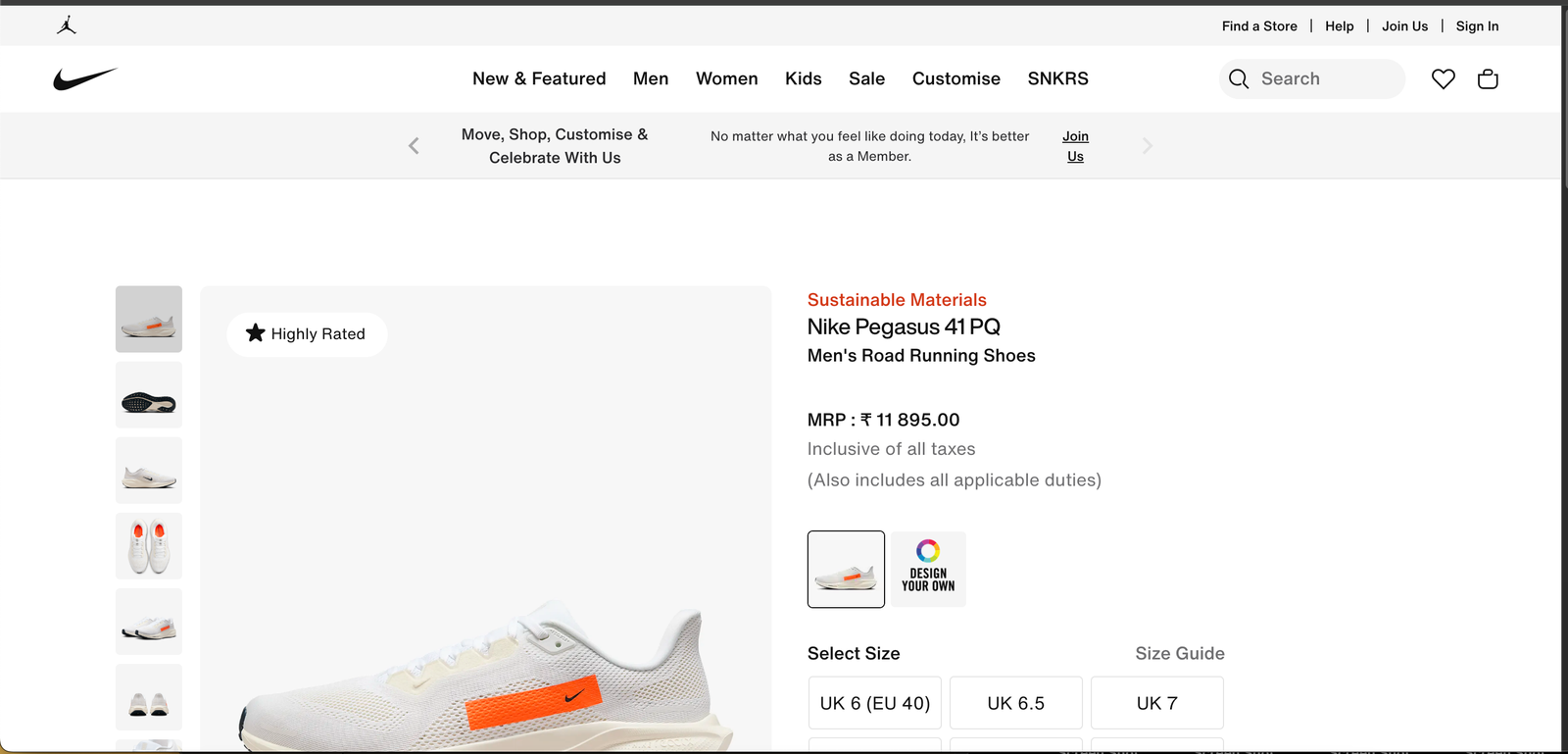
Apple’s minimalist design aesthetic, coupled with sleek product packaging and user-friendly interfaces, reinforces the brand’s reputation for innovation and sophistication.

At Webvision , we understand the transformative potential of graphic designing services in shaping brand narratives and driving business success. Our team of experienced graphic designers is dedicated to creating visually stunning and emotionally resonant designs that captivate audiences and elevate your brand to new heights. Whether you’re in need of a captivating logo, engaging marketing materials, or a visually stunning website, we’re here to bring your brand story to life. Contact with Webvision Solution – a leading Graphic designing agency to unlock the power of graphic design for your business.

To grow your business & get maximum return on your investment
We Guarantee 100% Security of Your Provided Information
Filled information is only used to contact you for further assistance. We are not going to spam or sell your personal data to anyone.
Address
301, Onyx Business Centre, Sunpharma – Atladra Road, Vadodara, Gujarat
Call Us On
Email Us
Webvision Solution is a trusted IT services provider offering top-rated custom website development, digital marketing, graphic designing, and a range of IT services in the global market. From simple to advanced website development to effective digital marketing and creative graphic designing services, we are here to provide excellent services to fulfil all your IT needs.
Useful Links
All Rights Reserved & Made with ❤️ by Webvision Solution

 Maximizing Returns of Investment (ROI): Effective Pay Per Click (PPC) Management...
Maximizing Returns of Investment (ROI): Effective Pay Per Click (PPC) Management...To Boost Your Career with Webvision Solution
To Grow Your Career with Webvision Solution